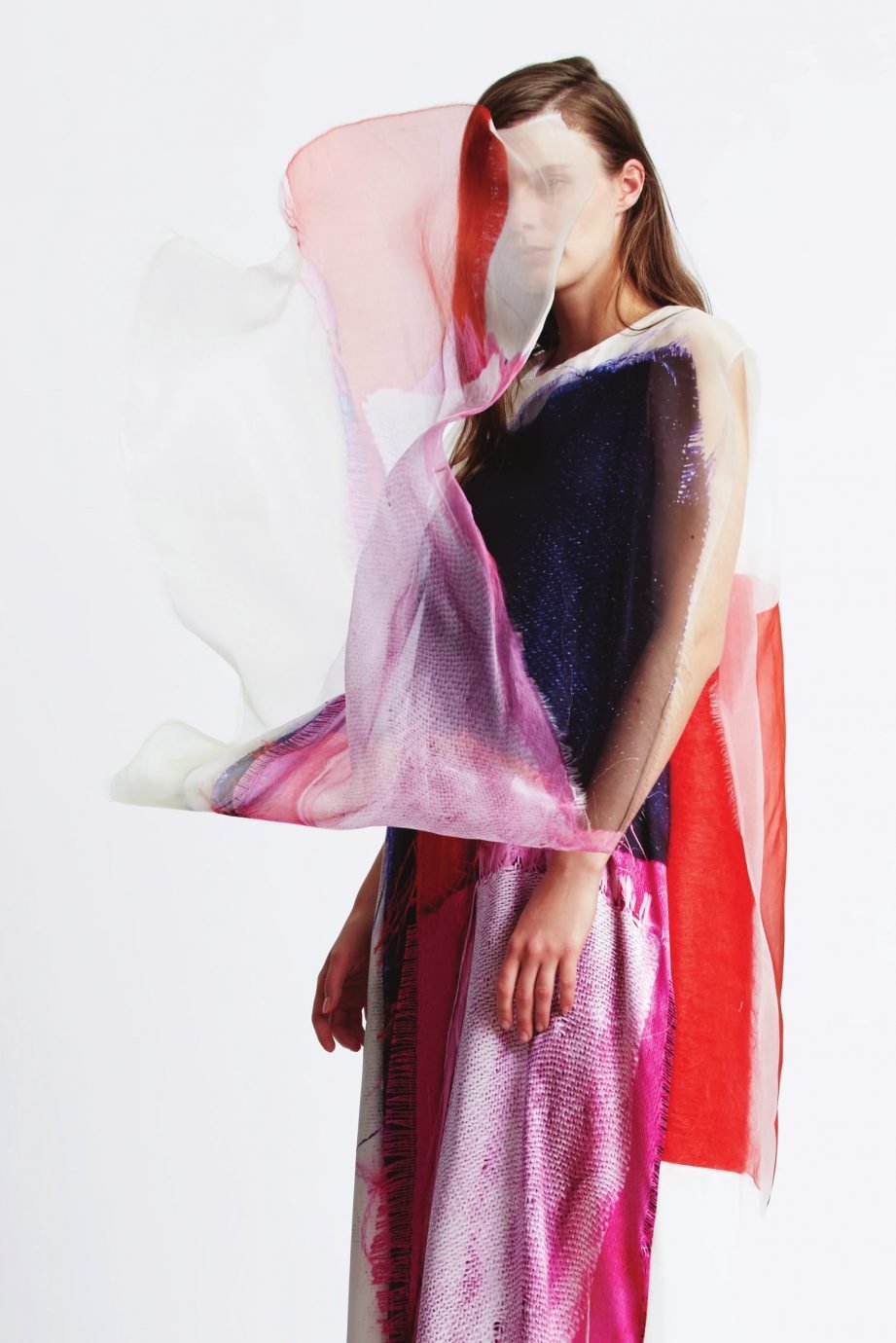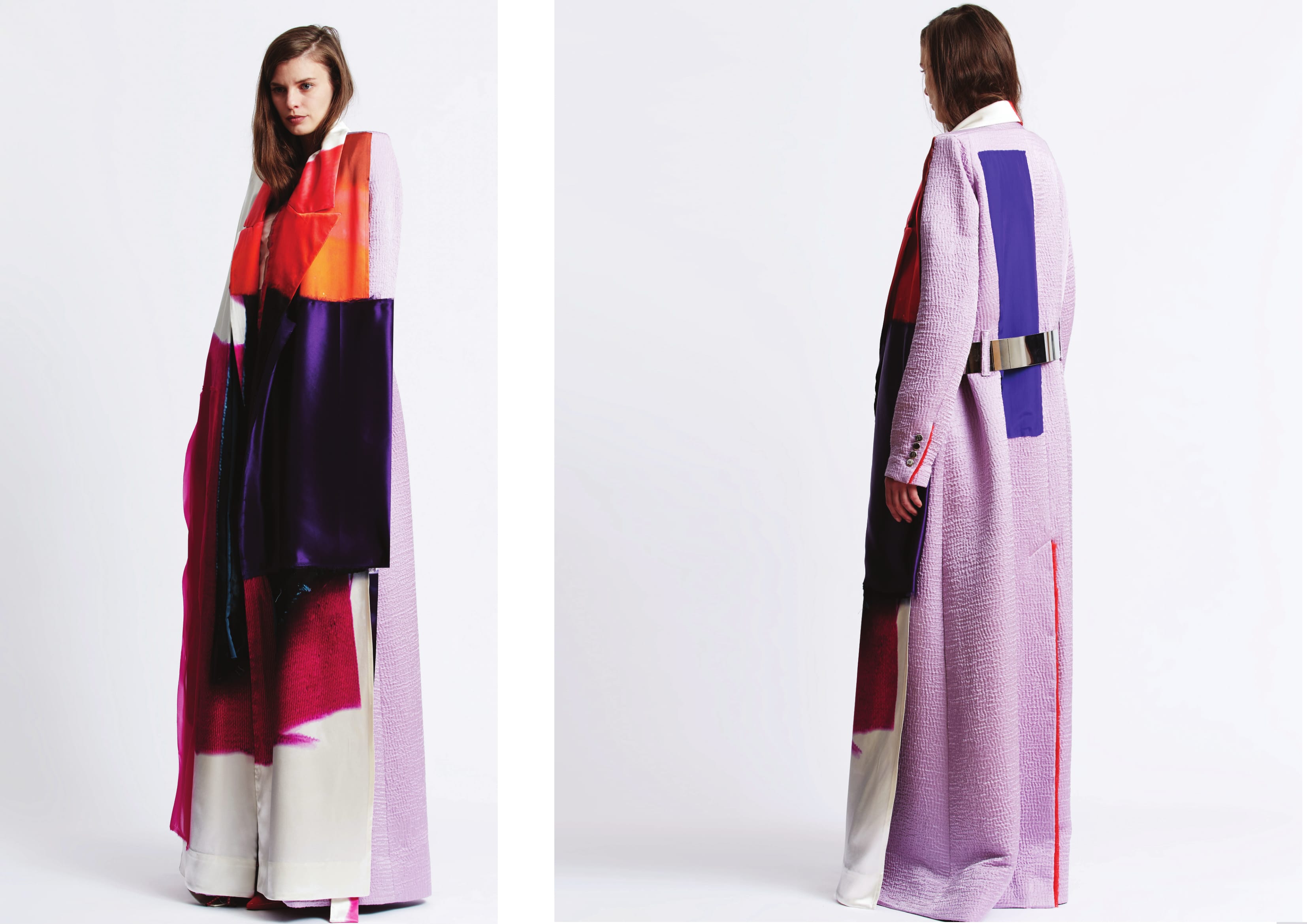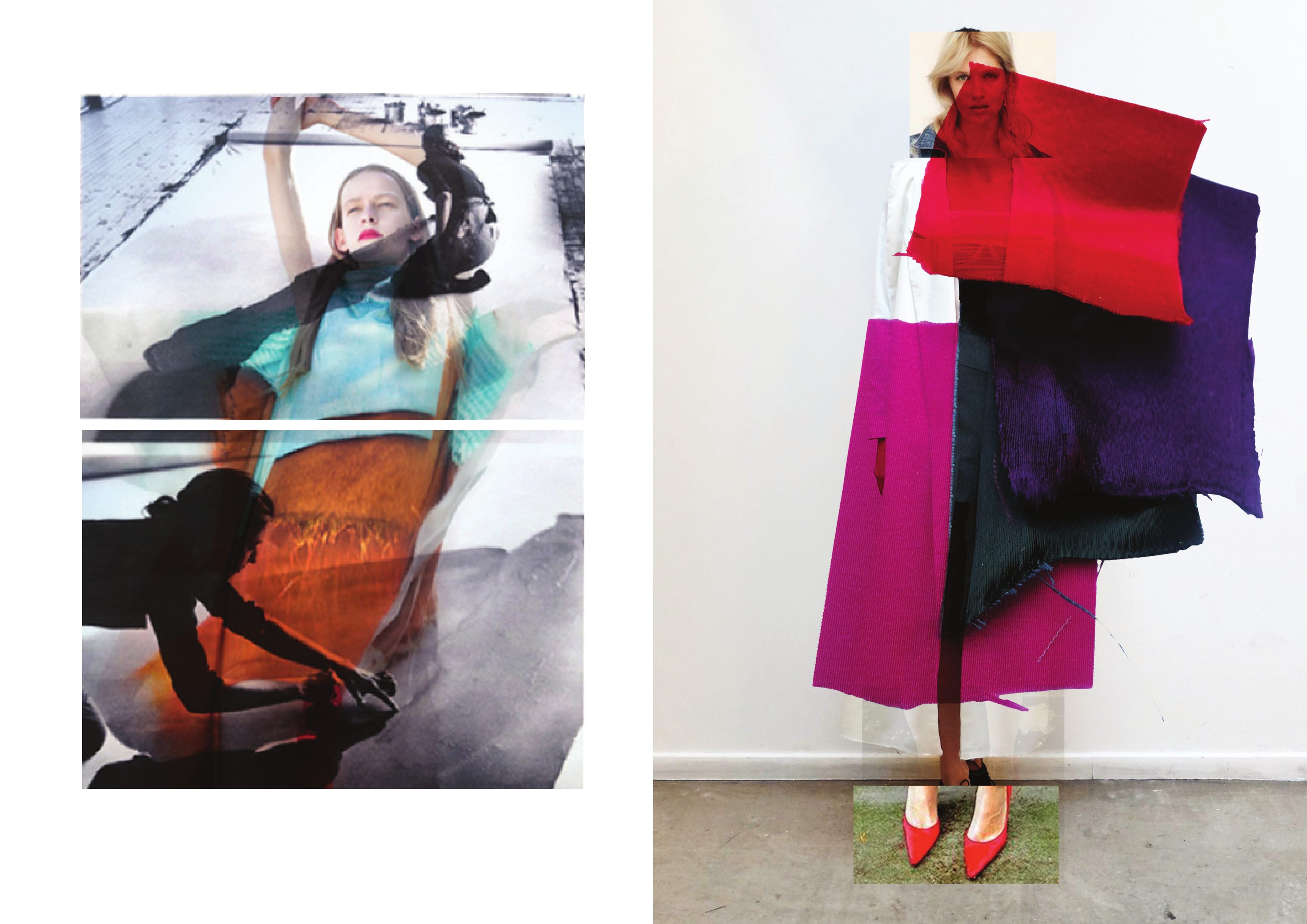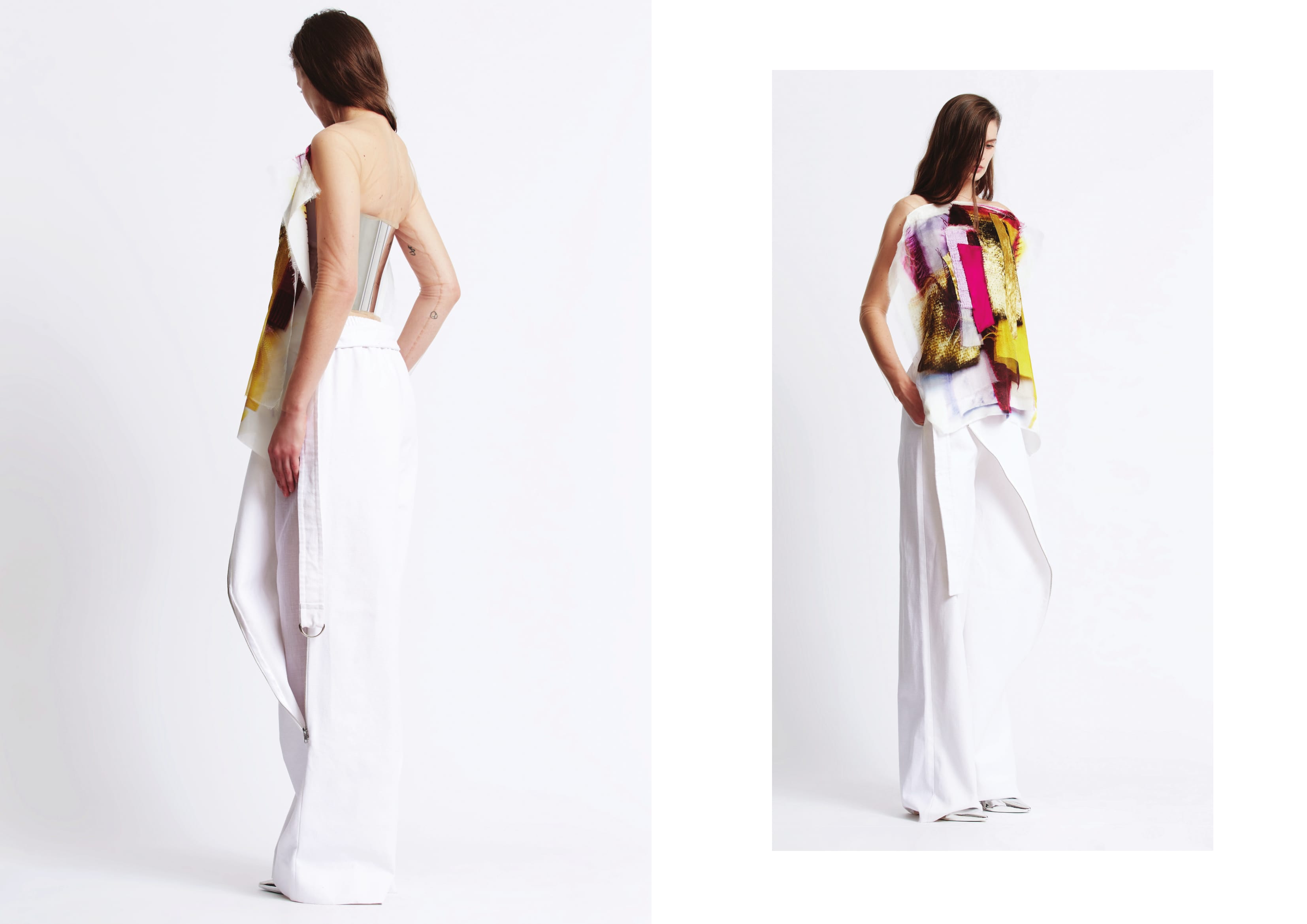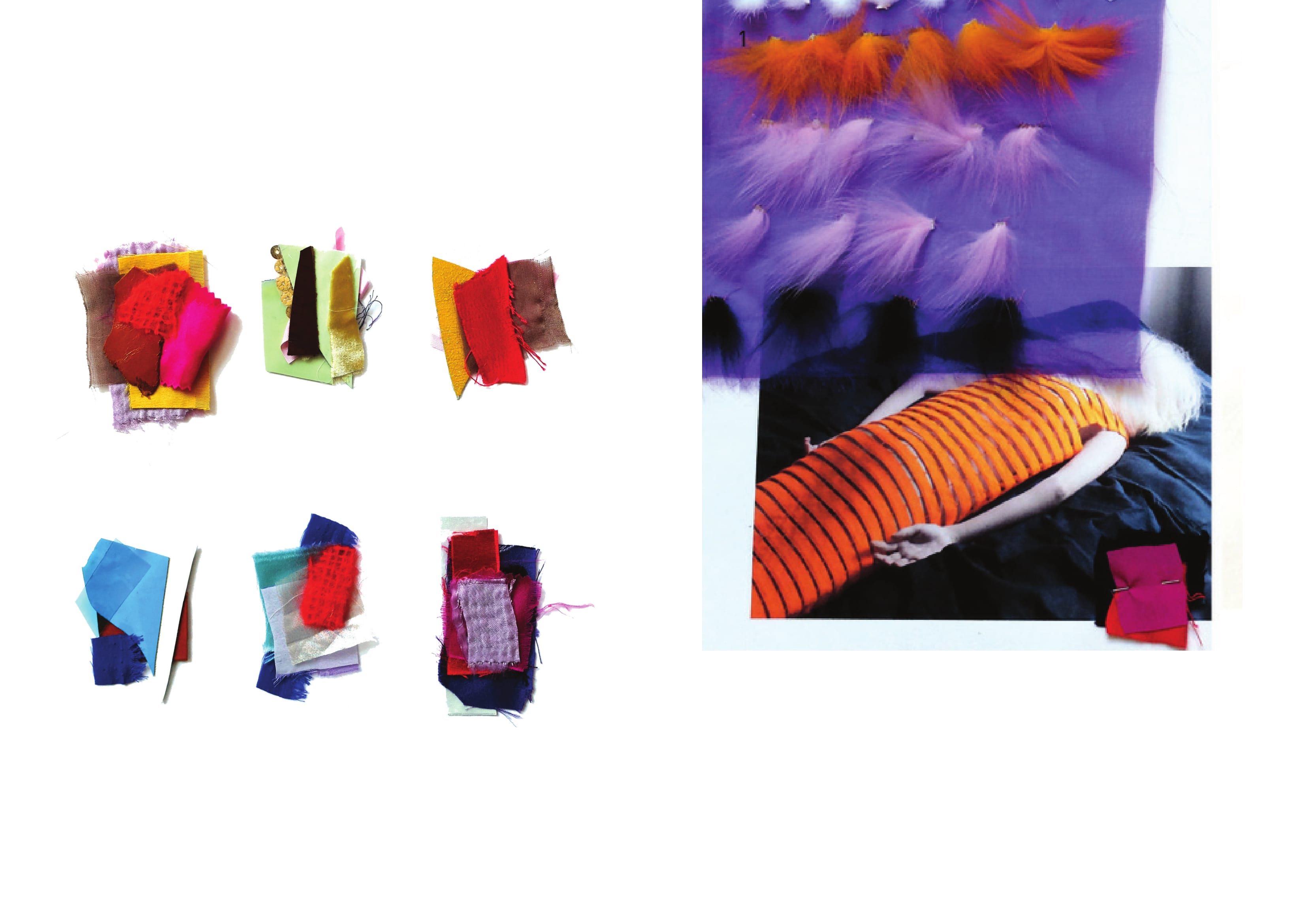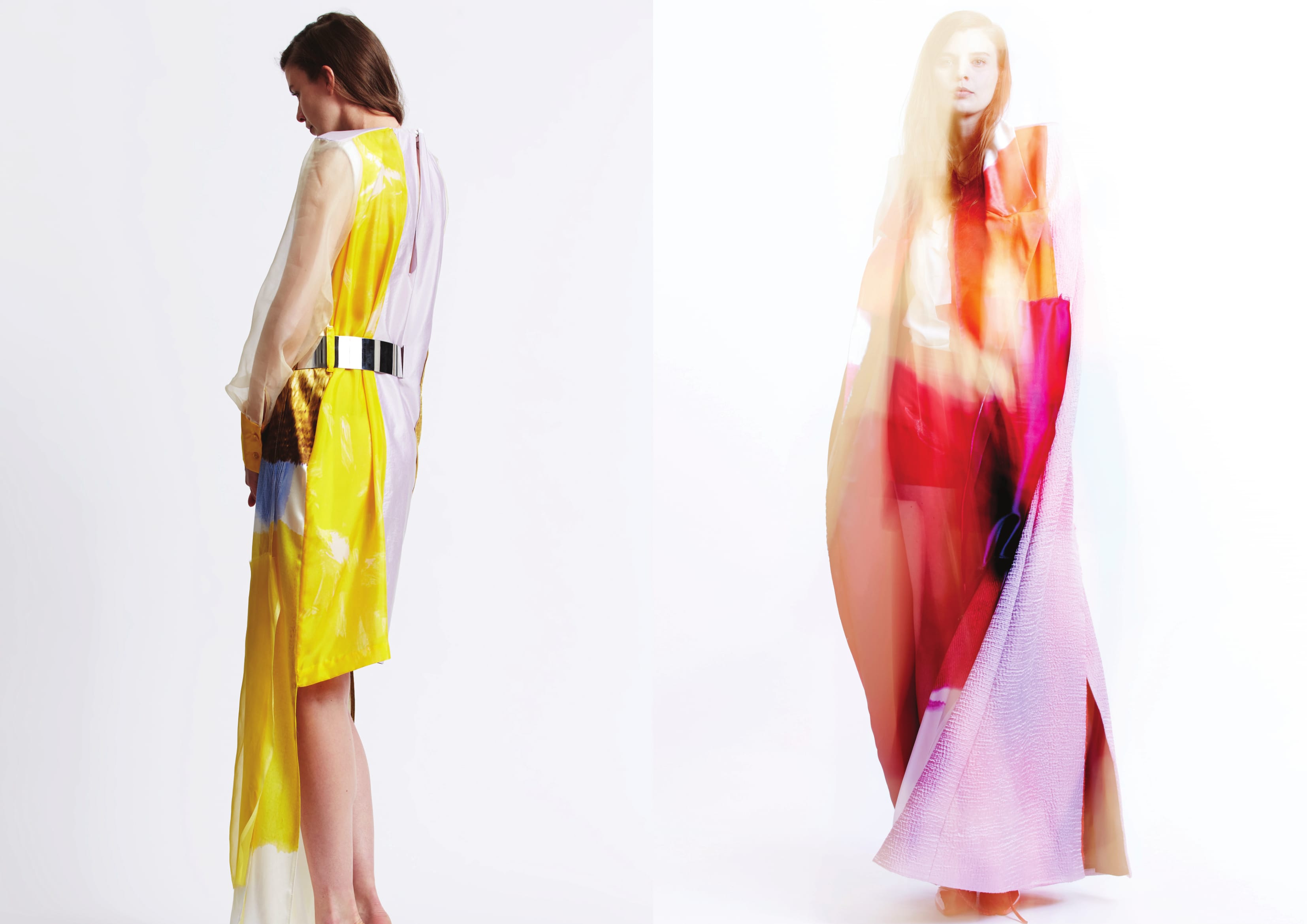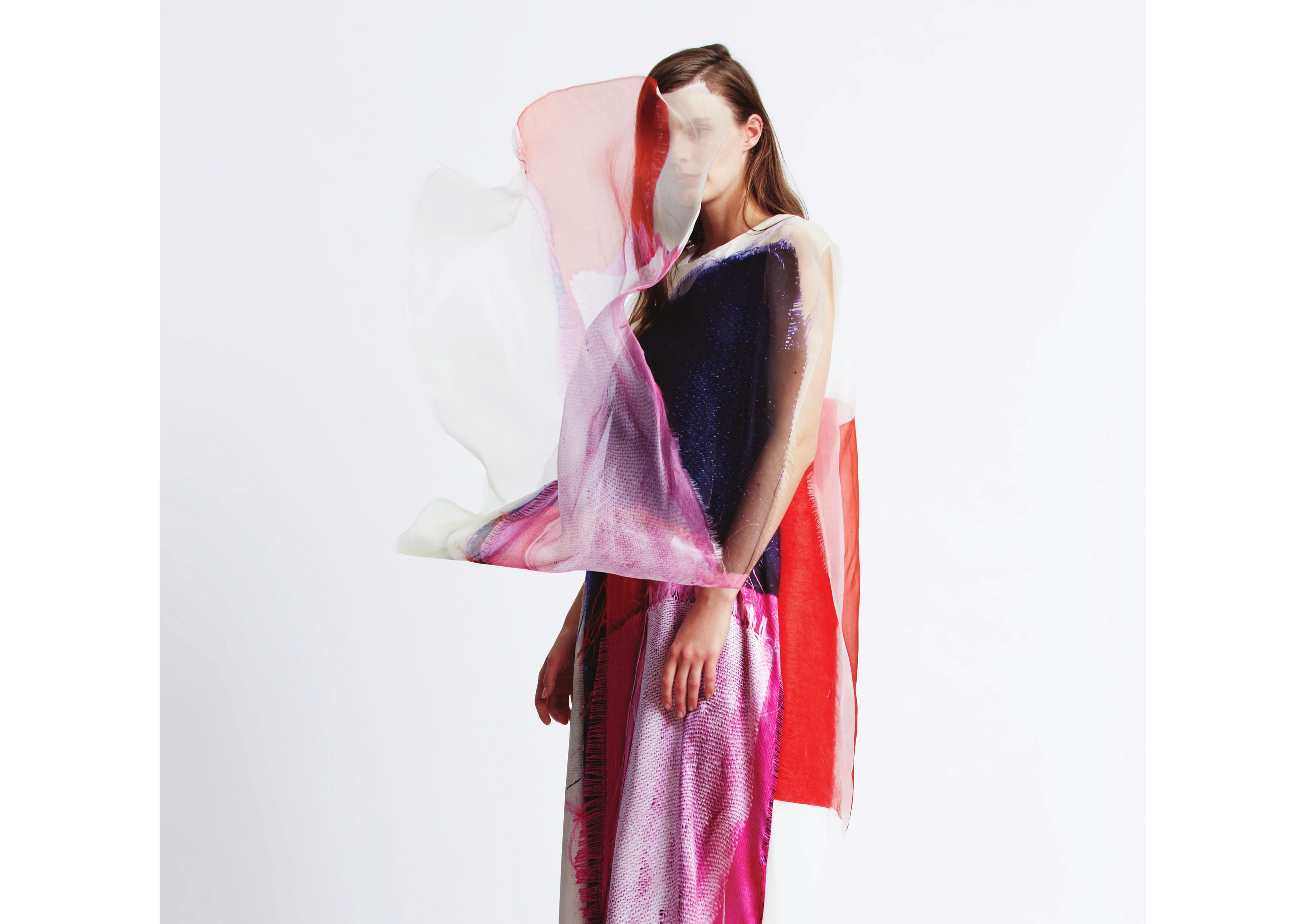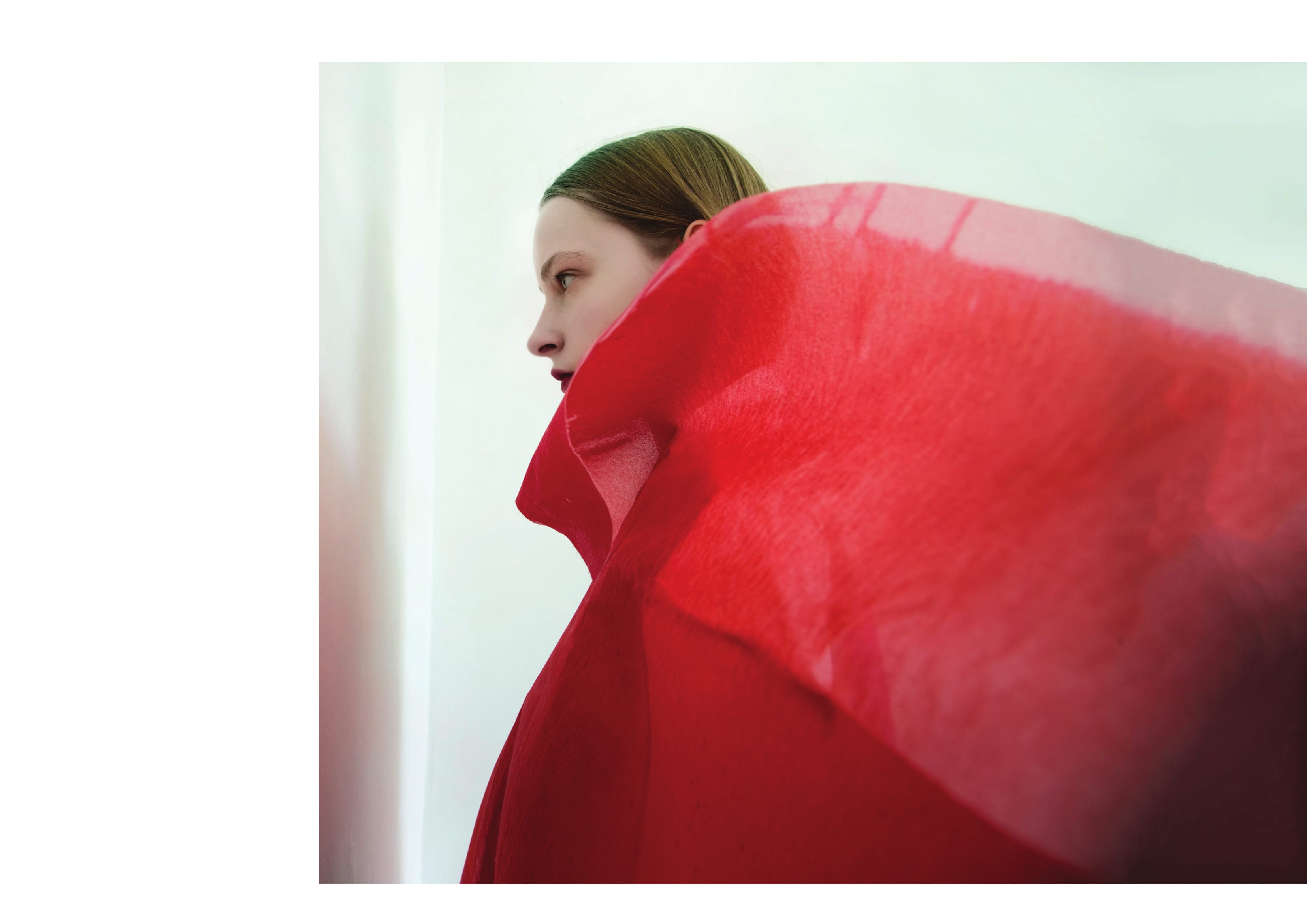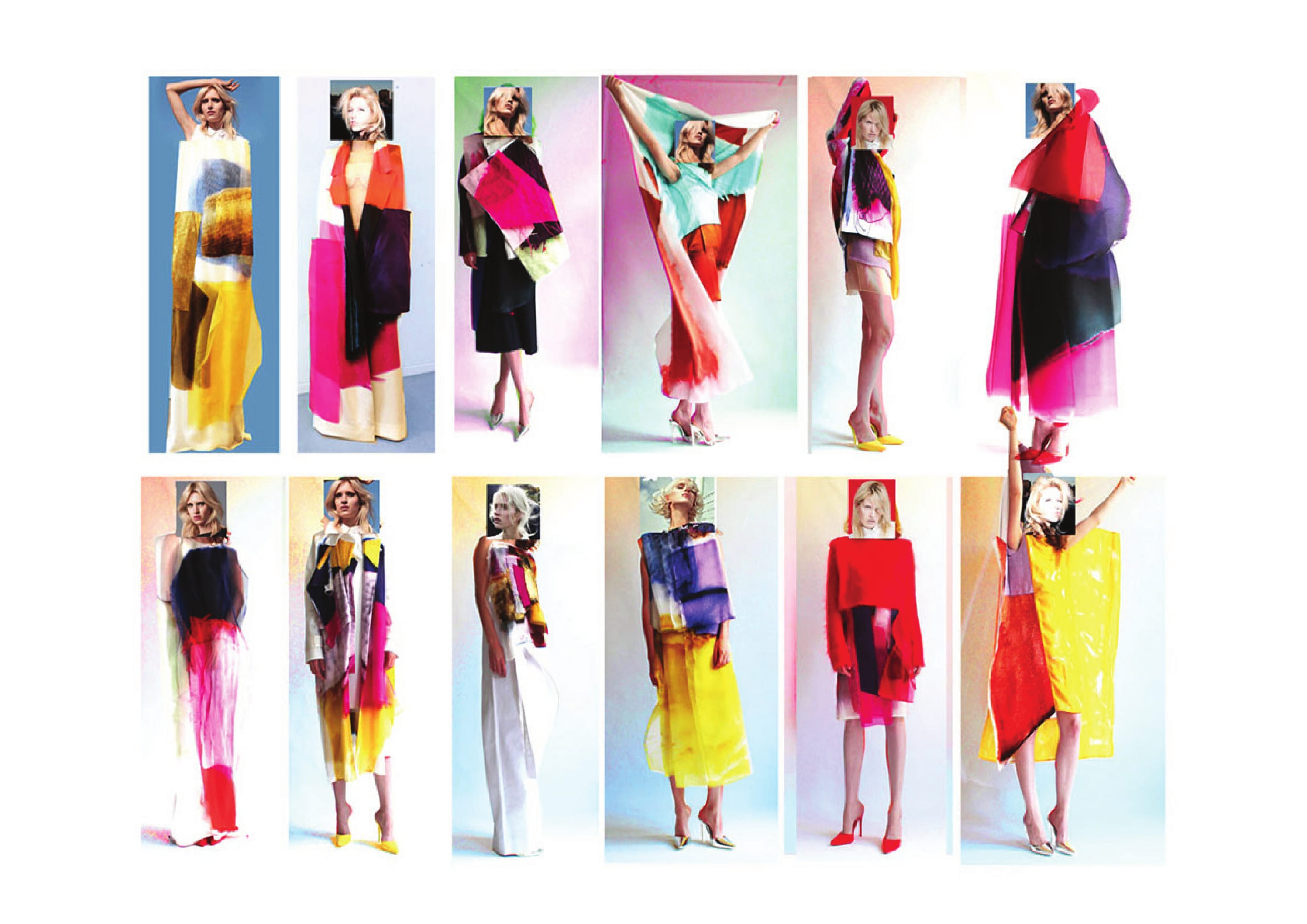Now that you have had some time apart, is there anything you miss about being in school?
I miss doing my own work. The master year gives you a lot of freedom to try new stuff. I miss this time.
After graduating, you decided to move to Japan. Do you think the international environment of Antwerp encouraged you to do this, or was traveling always something you wanted to do?
After the graduation show the head designer from Uniqlo recruited me. I never went to an Asian country before, so I was curious and took the chance. I think the international environment of the Academy encouraged me to do so. Here classmates are from different cultures and backgrounds, and I learned that there are many ways to come to a result.
Here in Japan, everything is still exiting and so different from what I have known before. New things happen and I learn more about myself and the world. I love that. I think that there is no straight line or right direction – you have to find your own way.
I have heard that the hierarchic work culture of Japan is very different compared to Europe. Can you tell me a little bit about this?
It’s a different culture. Compared to Europe, the group loyalty in Japanese firms is very strong. Employees are expected to work hard and demonstrate loyalty to the company. In exchange, the company invests in you with education and gives you security and benefits. To work in a Japanese company, you need time to understand the way of working and as well as the way people communicate. Actually, we have interpreters in the office who work there to make it easier, but there is a lot of unspoken communication in the Japanese culture which requires a good knowledge of context. It is difficult and I am still learning.
Currently, what are your working days like in Tokyo?
I work as a designer in the womenswear team. In the beginning of the season, we collect and organise ideas. Uniqlo designers do a lot of crossover work. I develop the items that I am responsible for from A to Z with the agreement from my team and the management. As designers we are researching, designing and developing prints with printmakers, choosing matching colours for each item, developing fabrics, trims, doing fittings together with pattern makers and so much more. Designers in this company communicate directly with the factories and suppliers. It is very important for Uniqlo to have a good relationship with them, so I get to travel around to visit factories, suppliers and other Uniqlo design departments all over the world. It is a very specific job and it requires a lot of knowledge in different fields. Communicating with MD’s, checking sales patterns and results to understand the market is also a part of it. The most important thing is that we are supposed to making clothes for people to wear, so I invest time in studying every last detail of clothes, both form and function. I am interested in the practical side.
What are some of the things you miss about Europe when you are in Japan, and vice versa?
I miss the people I care about, the seven hour time difference can make it difficult. I also miss big apartments, relaxed working hours and having less rules.
What has been the most exciting moment since you’ve moved to Japan?
I am still very excited here, everything is new and different and I discover new things constantly. In Japan, a lot of beauty is hidden and it takes a while before you discover it. On Teshima island, for example, you’ll find an intriguing contemporary artwork – a simple concrete structure from Ryue Nishizawa, standing amongst terraced rice fields. It’s an experience with nature made of light, water and air. I love that place.
Last year DAZED featured an article comparing Japanese fashion to Belgian avant-garde. Is that something that resonates with your work?
Japan is an island, they have their own eye for things. I highly recommend to everyone, especially people working in the creative field, to discover Japan. It’s a different way of thinking and a different aesthetic. It’s very inspiring.
How would you describe your Master collection, and does it in any way reflect your current work?
I would describe my personal style as contemporary, feminine and classic, with an edgy twist. My MA collection was a playful collection. I can see now that it is a lot different from my former work at Alexander McQueen, where I was hired after my BA, which gave me the inspiration and break that I needed. I took references from clean, sharp and masculine tailoring, in contrast with a minimal interpretation of classic dresses and sport details. What interests me is studying clothing details, form and function. In the same way, I use this skill now when I develop items. My years at the Academy have taught me to have a sharp eye for proportion, materials, colours and details, and this reflect my current work. At the moment I am also working a lot with colours. Especially how to choose the right colours and colour combinations. This specifically reminds me of my last year at the Academy, because colours were a very important part of my Master collection.
Since graduating, have you had any time working on your own projects?
In Japan there is so much to see and to discover – there are many distractions so I don’t stay so much at home. As I mentioned earlier, I also get to travel a lot to other countries, and I like to go exhibitions and meet up with friends. I did some painting and photography and want to do more. I really miss doing my own work. To me it’s important to have a good balance between input and output.
Do you remember the moment, person or collection that inspired you to become a designer?
When I went to Antwerp in 2007 and saw the MoMu exhibition on Bernhard Wilhelm – I knew I wanted to move to Antwerp and study fashion at the Academy. It was not just the fashion that inspired me, all fields came together: film, installation, objects, picture, paintings, graphic and clothes. I was amazed. I always loved art forms that allow you to go in all kinds of directions with it. Fashion embodies that for me, it’s not flat but rather multi-facetted. You are drawing, storytelling and bringing a design to life with all kinds of materials.
Is there any specific work or collection that you secretly wished you had done?
There are so many inspiring collections that I would love to have done. But in the end, you have to be honest with yourself. It’s important to know your style and to be confident about it. If I have to choose a specific work, I love the idea of the Bread House (2004-2006) by the Swiss born artist Urs Fischer. It is a life-size alpine chalet made from bread. To me it shows with ironic humour that anything is possible. Of course, I am interested in many different fields, not just fashion. I would love to be able to dance like one of Pina Bausch dancers. It looks very phonetic.
What is your ideal way of working?
I am the happiest and most productive person when I work in an environment that suits me – when I am surrounded by people that I like, when I am involved with my ideas, when I am challenged and when I am learning.
Is there anything you admit to being bad at?
I am bad at remember names. I can capture people and know every detail about them, but with names I am very bad. I have to improve that.
Haha, me too. For the last question, what advice would you give anyone wanting a career in fashion?
Stay open for opportunities. Challenge yourself, take risks and do not be afraid for changes. Enjoying what you are doing and be curious.

